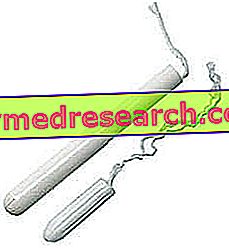What is Linoleic Acid
Linoleic acid (LA 18: 2) is an essential lipid with 18 carbon atoms which, together with gamma-linolenic acid (GLA 18: 3), diomo-gamma-linolenic acid (DGLA 20: 3), and all arachidonic acid (AA 20: 4), constitutes the group of omega 6 essential fatty acids.
Chemical Structure

Biological Functions
Linoleic acid is a fundamental precursor of some endogenous bioregulators:
- prostaglandins, which play a very important role in inflammatory processes
- thromboxanes, involved in blood coagulation.
Effects on cholesterol
One of the beneficial effects of linoleic acid is undoubtedly that linked to the lowering of TOTAL cholesterol; DGLA acts (more than oleic acid - omega 9) on liver receptor sensitization to lipoproteins, with the drawback (absent for omega 9) of slightly reducing high density lipoproteins (HDL or "good cholesterol").
For some specialists, the NON-SELECTIVE hypocholesterolemic action of linoleic acid can be considered negligible, as the complications related to hypercholesterolemia are correlated above all to the alteration of the RELATIONSHIP between lipoproteins (LDL / HDL); furthermore, concerns have been raised about a possible pro-inflammatory activity of excess omega-6 in the diet. In this regard it is worth considering that:
- among the risk factors for cardio-circulatory diseases include not only the alterations of the lipoprotein ratio, but also the TOTAL LEVELS of blood cholesterol. Furthermore, in percentage terms, linoleic acid lowers LDL values much more than those of HDLs, which will generally tend to stabilize; the result is a reduction in the total C. / C ratio. HDL. Depending on the studies considered, in fact, the impact of linoleic acid on HDL values may be slightly negative, stable or slightly positive, while there is concordance in the significant reduction of LDL.
- Extensive literature evidences show that an adequate dietary intake of omega 6 fatty acids, in particular linoleic acid, is useful in reducing cardiovascular risk. To obtain this benefit it is essential that these fats replace (not add to) the dietary intake of saturated and trans fats (contained in animal fats, pork and beef, and old-generation margarines).
- Human studies do not identify any direct correlation between food consumption or plasma levels of linoleic acid and the main inflammatory cytokines. Some studies attribute an anti-inflammatory action to linoleic acid.
LA Rich Foods
Linoleic acid is mainly contained in sunflower seeds, wheat germ, sesame, walnuts, soybeans, corn, olives and related oils.
| FOOD | LA% |
| Safflower Oil | 78% |
| Grape seed oil | 73% |
| Poppy seed oil | 70% |
| Sunflower oil | 68% |
| Hemp oil | 60% |
| Corn oil | 59% |
| Wheat germ oil | 55% |
| Cotton seed oil | 54% |
| Soybean oil | 51% |
| Walnut oil | 51% |
| Sesame oil | 45% |
| Rice bran oil | 39% |
| Pistachio oil | 32.7% |
| Peanut oil | 32% |
| Rapeseed oil (canola) | 21% |
| Chicken fat | 18-23% |
| Egg yolk | 16% |
| Linseed oil | 15% |
| Lard | 10% |
| Olive oil | 10% |
| Palm oil | 10% |
| Cocoa butter | 3% |
| Macadamia oil | 2% |
| Butter | 2% |
| Coconut oil | 2% |
Need and Diet
Recommended intake
According to LARN sources (Recommended Nutrient Intake Levels for the Italian population), the supply of omega 6 essential fatty acids must constitute 2% of the total kilocalories and the ratio between omega 6 and omega 3 should be at least 6: 1, or even better 4: 1; however, it has been estimated that in the Italian diet the ratio between omega 6 and omega 3 is between 10: 1 and 13: 1.

Excess Risks
An excess of linoleic acid in the diet to the detriment of alpha linolenic acid could represent a risk factor for inflammatory / autoimmune diseases, such as atherosclerosis, cardiovascular diseases, rheumatoid arthritis, osteoporosis, mood disorders, cancer, diabetes and obesity .
With regard to the toxicity deriving from the assumption of high doses of linoleic acid (> 20% of total calories), in the short term it has been observed that an excess can cause even important metabolic and functional damage:
- formation of toxic lipoperoxides, extremely harmful molecules for the liver, especially in the absence of adequate levels of antioxidants;
- alterations in immune function.
In order to avoid such complications, LARNs recommend a regular intake of linoleic acid of less than 10-15% of the total calories in the diet.
The most recent international guidelines suggest that omega 6 should represent between 5 and 10% of the total calories taken daily with the diet; a value therefore greater than that recommended by the LARN.
This result is achieved through a reasonable use of traditional vegetable oils, along with the consumption of fish (2-3 weekly portions) and possibly alternative vegetable oils rich in alpha linolenic acid (such as flaxseed oil, the oil of canola, walnut oil and hemp oil).
Bibliography:
- Reasoned medical therapy - Aldo Zangara - Piccin
- The aging. Healthy aging with functional medicine strategies - Massimo Pandiani - New techniques
- Levels of recommended nutrient intake for the Italian population (LARN) - Italian Society of Human Nutrition (SINU)
- Commission of the European Communities, 1993
- Clarke JTR, Cullen-Dean G, Regelink E, Chan L & Rose V - Increased incidence of epistaxis in adolescents with familial hypercholesterolemia treated with fish oil - 1990 - J. Pediatr. - 116: 139-42.



